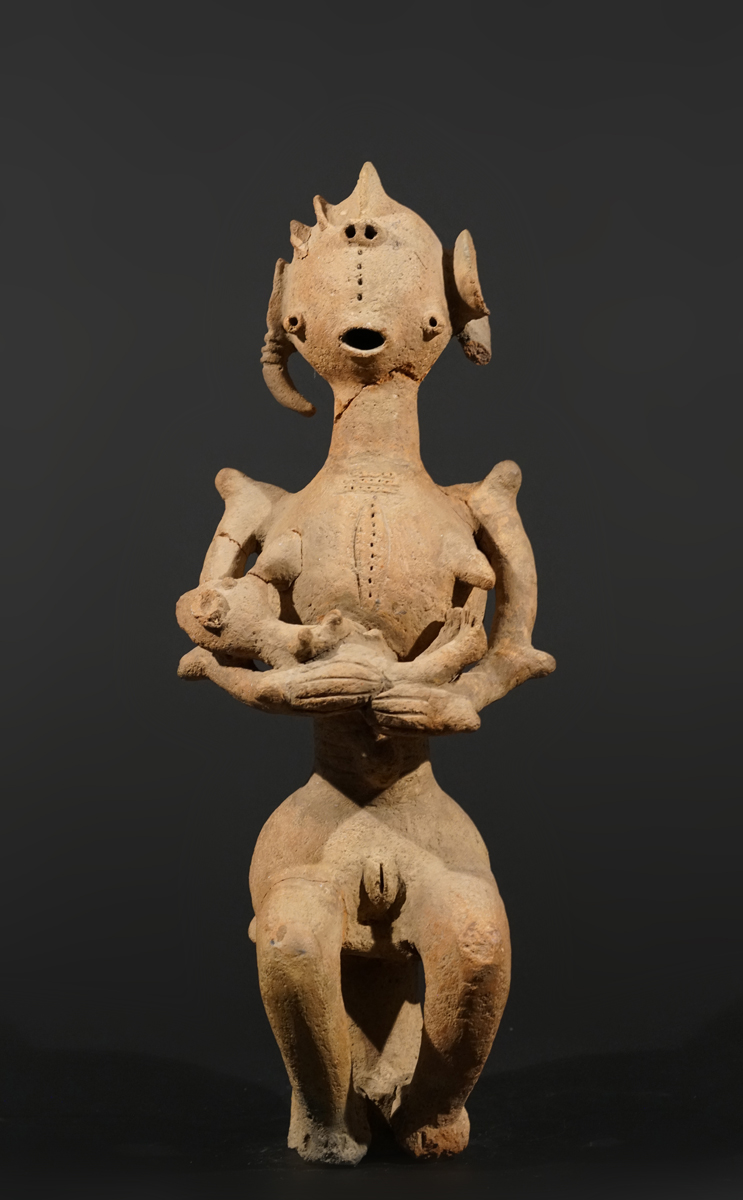 |
A fragmentary Adamawa Maternity, Nigeria, holding a suckling child in her arms, ochre to reddish surface.
The object takes on a variety of zoomorphic and anthropomorphic themes and forms and shows considerable technical mastery in its execution. The sculptures are not archaeological, but were used in the 18th to 19th centuries for ritual/healing purposes.
The Adamawa live in northeast of Nigeria close to the border with Cameroon and have a striking expression of their facial features, which (with their open mouth) resemble those of Cham or Mwana. They are usually vessels for ritual medicine. Nevertheless, the figures are clearly different from those of the Cham or Mwa, which, unlike the Adamawa, have elongated lower lips. The Adamawa are hardly described in literature, although they have great artistic skill in the design of their figurative healing vessels. This is presumably the only known equestrian figure where it is not possible to say what kind of animal it is. It could be a horse or a ram on which the rider sits. In the representation of mounts, these are usually figures that were made before a long, arduous journey in order to reach their destination successfully. The model was based on the horses of the Western colonialists, who also came from far away and had travelled a long way. Thus, animals on which one could ride became the symbol of a successful journey, which were attributed magical powers and some of which were sacrificed.
900 - 1.200,- Euro
Height: 61 cm
Weight: 4,2 kg
|
 photo: wolfgang-jaenicke.com, for more information, please write us an e-mail with the identification number of the photo identification no. GSC08913.jpg
photo: wolfgang-jaenicke.com, for more information, please write us an e-mail with the identification number of the photo identification no. GSC08913.jpg |
|
